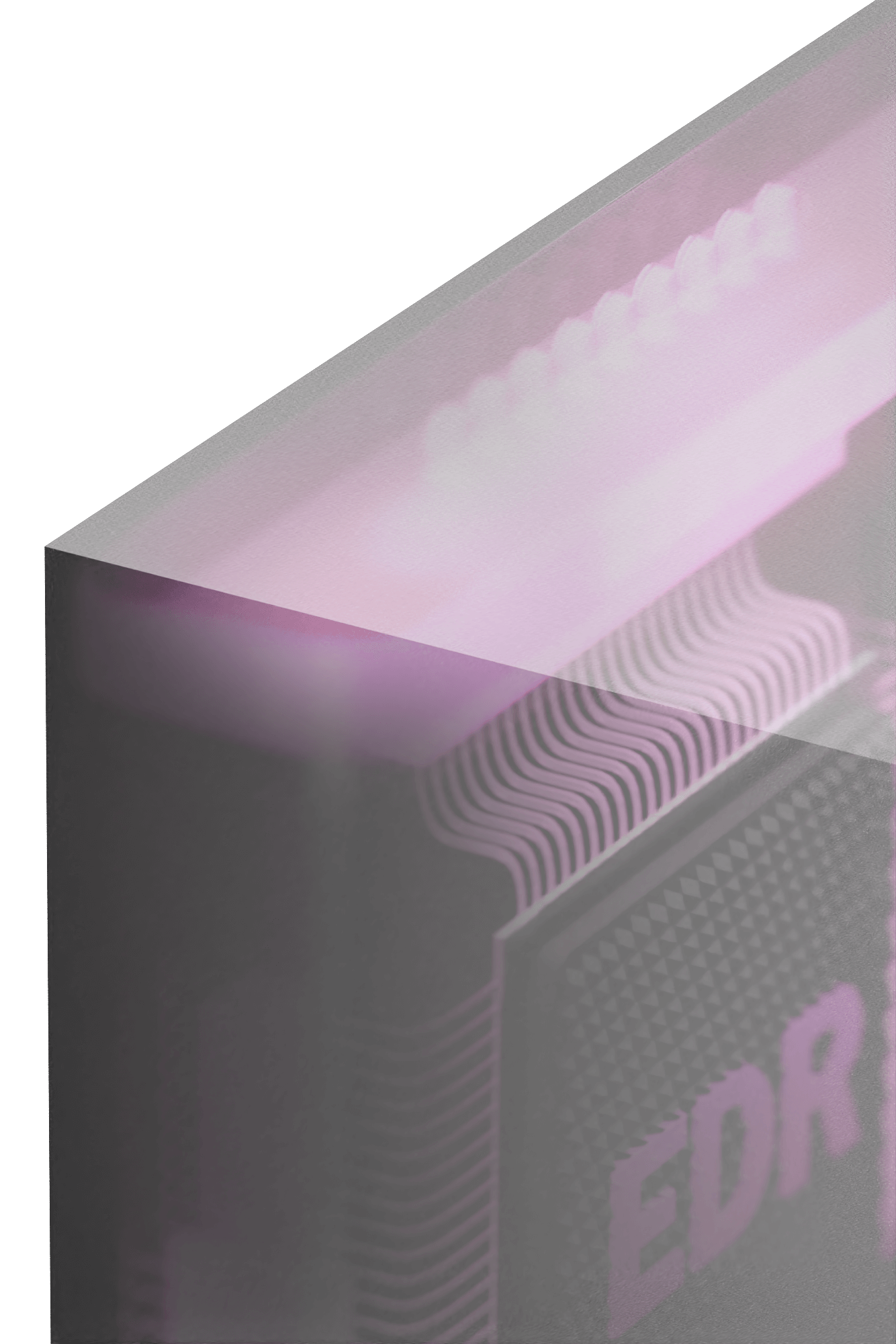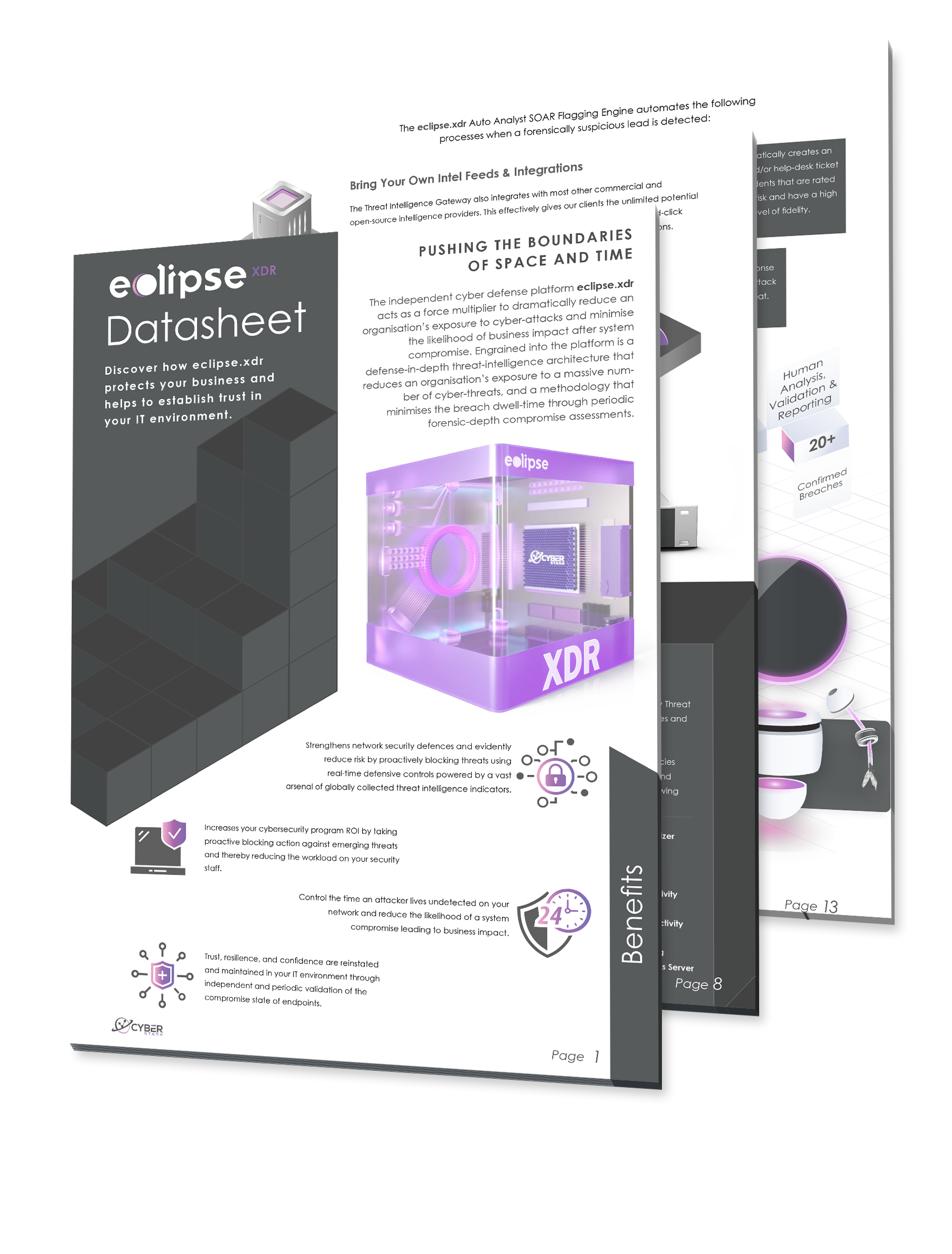Compromise Assessment Service

Collection
Forensic State Analysis
Enrichment
Conclusive Validation
Detection Methodology
Unlike other breach-detection strategies, CyberStash doesn’t wait for predetermined events to occur before investigating suspected breaches. Instead, we use Forensic Depth Analysis (FDA) to proactively hunt and discover sophisticated and unknown attacks that would otherwise remain invisible in an enterprise environment. The FDA approach thoroughly validates every aspect of a system by going underneath higher-level operating system APIs and working directly with volatile memory structures. We combine FDA with intelligence and the anomaly analysis of operating system artifacts (STACKING) to generate leads. Once we have these forensic hits, we inform and enrich what we have discovered using additional techniques, including Code Comparison, Machine Learning, Sandboxing, Threat Intelligence, and finally Human Analysis.
Defines Policy for Controlling Breach-Dwell Time
Establishes and Maintains Trust in the IT Environment
Reduces Likelihood of Business Impact by 96% following a Breach
That’s why our methodology involves looking at every possible forensic artefact, behaviour and traffic in an environment and conclusively validating its level of risk to business
Endpoint Forensic-Depth Analysis
Human analysis of discovered threats with context to business risk and final
In-Memory Living-off-the-Land Analysis
Endpoint Adversary Behavior Analysis
Detonating unknown and suspicious files in the CyberStash sandbox to discover its actual intention and level of risk.
Network Threat Intelligence Analysis
Dynamic Analysis and Software Mapping
Human Analysis and Reporting
High-Risk Country and Autonomous System Intelligence
Detecting network traffic traversing to high-risk countries and autonomous systems.
When delivered as a Managed Detection and Response (MDR) service, our security analysts then go over the endpoint meticulously to flag every operating system component as Verified Good, For Review, Potentially Unwanted or Verified Bad. We maintain a memory of these decisions and then work on all the net-new forensic leads we discover on subsequent assessments, thus enabling us to deliver a feasible and scalable service to any size enterprise.
Finding Code in Memory
Discovering malicious code in memory requires forensic level analysis, and CyberStash achieves this through the 5-step process illustrated below
State-of-the-art
Cyber Security Soultions
To stay ahead of threats, the methodology used must not depend on detection engines designed to catch the threat itself.
The capability used to support such a methodology must be designed to ‘catch all leads’ and then validate each one and provide a conclusive verdict of either ‘compromised’ or ‘not compromised’ without leaving any room for doubt.
Human Analysis
Allowing threat enrichment and
ultimate recognition of even the most sophisticated APTs in seconds
Identification
Allowing threat enrichment and
ultimate recognition of even the most sophisticated APTs in seconds
Unknown File
We upload files that are flagged as
forensically bad or suspicious to the
CyberStash Cloud
Extraction
Allowing threat enrichment and
ultimate recognition of even the most sophisticated APTs in seconds
CyberStash combines best-in-class technology, people, and processes
to deliver its Compromise Assessment Service.
We offer 4 service levels which meet the requirements of organization
to control the breach dwell-time and aligned with its risk appetite.
Business Case
Controlling the breach dwell-time reduces the likelihood of business impact. By detecting and cleaning-up breached systems within 1-day, the likelihood of business impact is reduced by 96%.
